The Strawberry Tree, using its modern popular common name, or the botanical name Arbutus unedo is a small shrubby Tree that can grow to twenty feet in the right environment but usually less. This Tree has a long association with people and an invocative history not withstanding it’s pretty flowers and interesting looking fruit which has given it the common name of Strawberry Tree. The Arbutus unedo berries I find 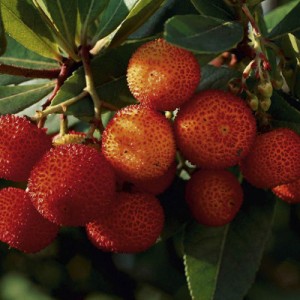 pleasant and sweet (the berries can vary in flavour as in all wild fruit) with a reasonable pleasant texture, I have attached a scientific study to this article which also validates the fruits high sugar content and which concludes that the Arbutus unedo is an undervalued and under used fruit.
pleasant and sweet (the berries can vary in flavour as in all wild fruit) with a reasonable pleasant texture, I have attached a scientific study to this article which also validates the fruits high sugar content and which concludes that the Arbutus unedo is an undervalued and under used fruit.
I first came across the name of this Tree in the mid 1990’s and was intrigued about where it had come from, as most British Trees were brought to these islands by people for a particular reason I wanted to discover some of its history and the main use of the Tree for the people who brought it to these islands.
I discovered that the Tree is abundant on the west coast of Portugal and a few other places near the sea in the Mediterranean and as far north as Ireland, principally on the west coast of Ireland, so obviously this Tree is well disposed to the wild winds and salty air from the Atlantic ocean, this investigation led me to discover some very rich history that traversed across civilisations from thousands of years ago.
I came across a legend that was based in time before the Romans had invaded Britain but during the period between Jules Caesar’s twice aborted invasion attempts and the full Roman invasion nearly a hundred years later. The legend stated that the Roman merchants based on the river Thames were unable to sell much imported wine because the British nobility preferred the ancient alcoholic drink fermented in Ireland and exported all over the British isles, the legend did not provide the name for this alcoholic drink, but sufficed to say that there was a large operation of making and exporting.
The Roman merchants paid for two ships to discover where this Irish alcoholic operation was based and then destroy it, thereby removing the rival drink and allowing the Romans to have the market to themselves for the luxury alcohol market. The two ships of mercenary’s made their way to Ireland and sailed up the river Boyne before trekking on foot the rest of the way which took them to the west coast of Ireland, before descending upon the villages that fermented the drink, the story goes they decimated the villages and cut down all the Trees (a big hint that it was the Arbutus) before returning to their boats and making their way back to the merchants for payment.
This is quite a tale, and has it all, rival merchants competing for market share and the loser resorting to criminal activity to nullify its rivals. The Arbutus is a fairly slow growing Tree and I would have expected the product was off the market for some 6 or 7 years if the bulk of the Arbutus Trees had been cut down and even then to return to full production could have taken fifteen years or more which by then meant that it’s market would have been completely dominated by the imported Roman wine and a difficult task to recover from.
If this was a drink fermented from the Arbutus Tree I wondered if there was any other reference to it and was anyone still making it, so I continued my investigations and it wasn’t until I went on Holiday to Portugal in the mid 90’s and on my way home I was in the duty free shop when I spotted a large bottle with a picture of the Arbutus fruit on it, the drink was called Medronho, I immediately purchased the litre bottle to bring back to the UK for drinking and further investigation.
At this time I also got the internet and was able to continue further research in the late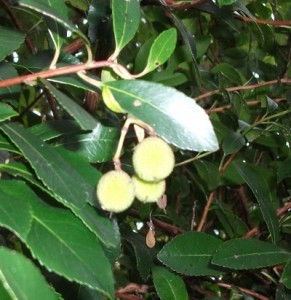 1990’s and the story and proof of the origins of the Strawberry Tree took many twists. So I knew and understood that ancient nomadic people and later farmers were moving in to the British isles as the ice age ended, but I also discovered that the Gulf stream, that great oceanic current that came across the Atlantic and which originated in the Gulf of Mexico and Caribbean before flowing across the Atlantic to Europe that during the ice age it would warm the waters of the Portuguese coast and the French bay of Biscay, I anticipated that the people who lived along the Iberian coast would know and understand the benefits of this warm current probably using small boats to fish perhaps their fishing was dependent on the type of fish that was produced by the warm waters.
1990’s and the story and proof of the origins of the Strawberry Tree took many twists. So I knew and understood that ancient nomadic people and later farmers were moving in to the British isles as the ice age ended, but I also discovered that the Gulf stream, that great oceanic current that came across the Atlantic and which originated in the Gulf of Mexico and Caribbean before flowing across the Atlantic to Europe that during the ice age it would warm the waters of the Portuguese coast and the French bay of Biscay, I anticipated that the people who lived along the Iberian coast would know and understand the benefits of this warm current probably using small boats to fish perhaps their fishing was dependent on the type of fish that was produced by the warm waters.
When the current shifted and moved north towards the British isles it would have been noticed and may even have changed the ecology of their fisheries. This warm current of water may even have had a sacred meaning to these people making it important enough to go where it went. Knowing how fish are temperature specific, these people would likely have found that the fish they depended upon had moved with the warm current, the fish that these ancient Iberians fishermen knew how to catch using the right type of nets and specific tactics it is not a big stretch of imagination to understand that the people followed the fish to the British isles.
There are ancient Irish legends of several invasions of people from the Iberian lands. There is also the archaeological proof of the BEAKER people who between 2800 and 2500BC either started to trade their famous pottery with and maybe even colonised parts of Britain, or more likely these People continued trading with their ancient ancestors who had colonised Britain sometime around 9000 BC when evidence of the first people’s are found in Britain.
Another part of this jigsaw I came across was that of the Scot Pine or European Pine (Pinus sylvestris) genetic testing of the Pines DNA strongly suggested that the Scot Pine originated in the northern mountains of Portugal and Spain and that the Pine Tree we know as the Scot Pine in Britain (European Pine – Pinus sylvestris) has three distinct DNA sub-species or that all the European ‘Scot’ pines were descended from the DNA of just THREE Trees, One of the Tree’s DNA sub-species was found in Saxony (Germany) and Scotland (near Edinburgh) and was the originator of most of the Scottish and German European Pines, the DNA from a second sub-species was found in western England (Cornwell) and was found to be the originator of all the English Scot Pines, but In the Portuguese mountains, the DNA of both of these sub-species plus a third was found, which seemed to conclude that the Tree originated there and seeds were carried by traders or colonists across land to Saxony and by boat and or land up the western coast of Europe to the newly uncovered and virgin lands of the British isles 11,000 years ago, the fact that the Saxony strand of Pine was also found on the east coast of Scotland, suggests that there was trade between the people’s of Saxony and Scotland, but we are talking of a time when there WAS NO north sea, but dry land, this land has been called ‘Doggerland’ and has been demonstrated to have been inhabited before the rising waters of the sea from the melting ice caps inundated and submerged the land.
This DNA investigation of Pinus sylvestris is proven and I would suggest that a people who cherished the properties of these Trees would have transported the Arbutus Tree with them to the west coast of Ireland (an ideal growing environment) just as they had with the Scot Pine, in fact the Scot pine was introduced into Ireland approx. 9000 years ago, it went extinct in Ireland sometime between 1000 – 2000 years ago.
It has been suggested that weather changes caused the Pine Trees extinction, although this was also the time Christianity reached Ireland, I suggest this was a deliberate and successful attempt by Christianity to destroy the ancient belief structure by eliminating the Pine Tree which were worshipped by the people. The Tree alphabet, in the form of Ogham also seemed to have originated in Ireland while the Runic language which is also a Tree based alphabet originated in Saxony, both areas of Tree worship. Although legend again suggest that these Tree languages were ‘secret’ languages used by the Druids, these languages did not appear in public until under pressure from Latin (Christian church) as a cultural identity.
Now I don’t want to diverge to far from the story of the Arbutus Tree, but of course the Arbutus is also found in patches on the coast of Mediterranean islands and country’s which also hints at the spread of the Tree via trade or colonisation by the Iberian people’s, and there are still local native drinks made by the Arbutus (Strawberry Tree) in some of these locations. (see bottom of this article)
So what is special about the Scot Pine and the Arbutus that ancient Peoples would carefully transplant with their colonists across the European continent? Some 11,000 years ago.
The Arbutus fruit is edible and when becoming over ripe on the Tree it can begin to ferment, producing a small amount of alcohol, which is probably what inspired the early humans to value this small Tree many thousands of years ago as there seems to be one constant throughout history is that humans like intoxications.
Its modern use’s include marmalade’s and Jams as well as an ingredient in various preserves, the fruit also has nutritional benefits containing its own particular vitamins and minerals, the fruit consists of lots of fine seeds, each seed would contain the vital minerals for new plant growth as well as proteins, the flesh of the berry contains high amounts of vitamin C as well as complex sugars, (I include a scientific paper on the nutritional value of the Arbutus fruit at the end of this article)
The shrub can develop into a Tree with a single or multiple stem and reach on occasion 30 feet, although generally it seems to be a large shrub where it can produce a multitude of fruit. When it is allowed to develop woody trunks rather than a shrub, the bark peels and contains a lot of tannin which is used for tanning leather, The leaves are also used in folk medicine for its diuretic effects and are antiseptic, used in mouth and throat gargles for sore throats, mouth ulcers, as well as poultices with cuts and sprains, the wood is still highly valued for making fine quality and slow burning charcoal.
Making the alcoholic drink is a simple procedure of using the natural yeasts on the fruit by macerating the fruit (crushing) and keeping in a covered container then distilling the fruit ale to produce an excellent quality brandy of about 40-50% alcohol strength.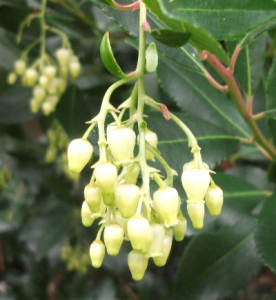 So the Arbutus unedo is an understated Tree, it seems to be still the same wild species with no breeding program involved to create an Orchard style Tree, it is generally planted as an ornamental shrub or Tree because of its pretty bell shaped flowers, which itself may have inspired the Bell shaped pottery of the original Beaker people five thousand years ago, as it looks very similar in shape to their vases and drinking vessels
So the Arbutus unedo is an understated Tree, it seems to be still the same wild species with no breeding program involved to create an Orchard style Tree, it is generally planted as an ornamental shrub or Tree because of its pretty bell shaped flowers, which itself may have inspired the Bell shaped pottery of the original Beaker people five thousand years ago, as it looks very similar in shape to their vases and drinking vessels
The European Pine (Pinus sylvestris) or Scot Pine has many ancient uses for a semi nomadic people from Medicinal through to practical glue and fire use, in fact there are so many uses for the Scot Pine (Pinus sylvestris) that I will leave that information for specific websites but it was so highly valued that the Tree had its own God and magical characteristics ascribed to it. The people who introduced both of these species of Trees to the British Isles are owed a great thank you.
Source’s:
http://homedistiller.org/flavor/liqueurs/fruit_recipes
Etymology:
- English – Arbutus, Strawberry Tree
- Portuguese – Medronho, Medronheiro
- Spanish – Madrono (with diacritical mark over the n)
- French – Arbousier
- Italian – Corbezzolo, Albatro
The Portuguese ‘Brandymel’ also from Algarve, is made with medronho sweetened with honey. On the French island of Corsica they make a ‘Liqueur a l’Arbouse’ and a sweeter ‘Creme d’Arbouse’. On the Italian island of Sardinia they make an ‘Acquavita di Corbezzolo’ similar to the Portuguese ‘Aguardente de Medronho’, and also a 30%abv liqueur, ‘Liquore di Corbezzolo (di Sardegna)’ while another distillery makes a 24%abv liqueur called ‘Fior di Corbezzolo’. I also came across a Spanish recipe for a ‘Licor de Madrono’ which looks rather sweet.
Honey made from Strawberry Tree flowers/nector
Nutritional study on Strawberry Tree fruit– right click to download .PDF
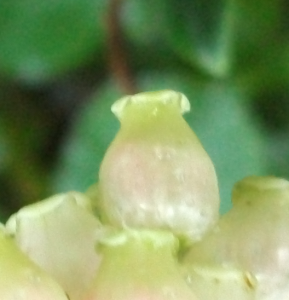
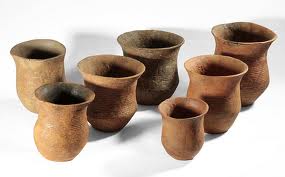
3 thoughts on “Strawberry Tree & People”
Comments are closed.